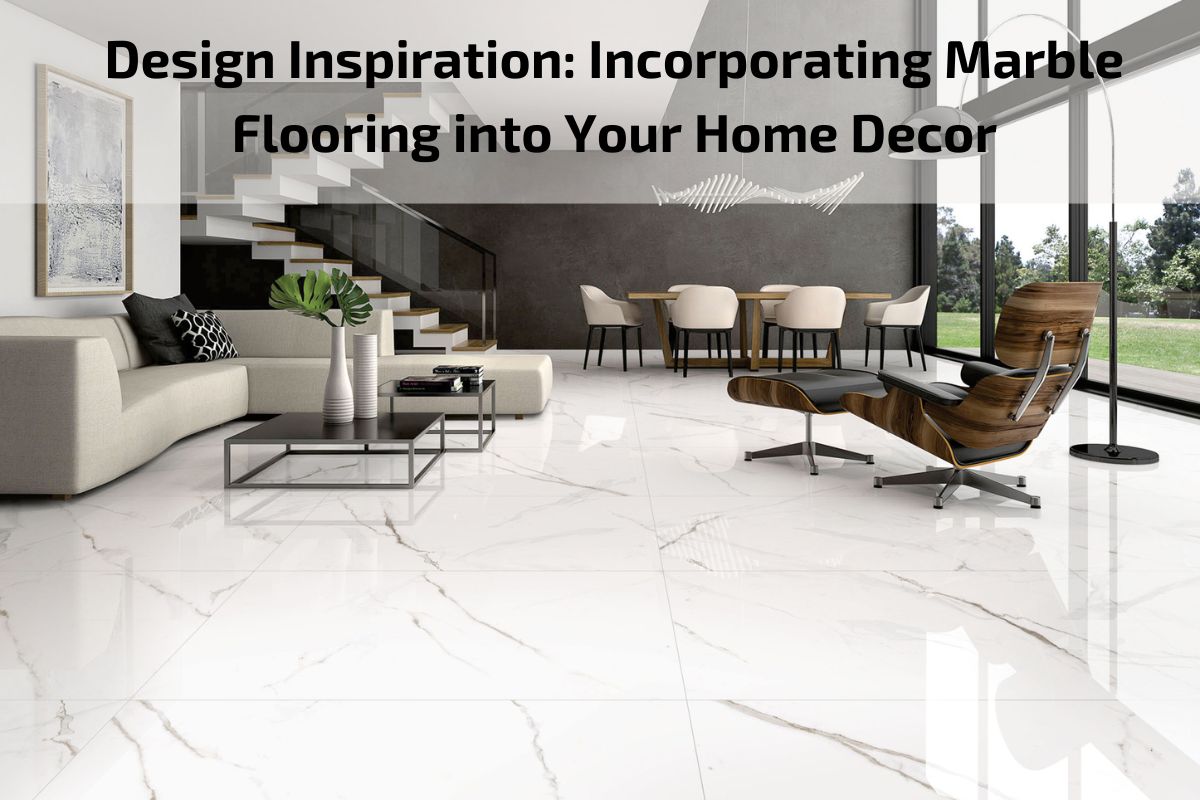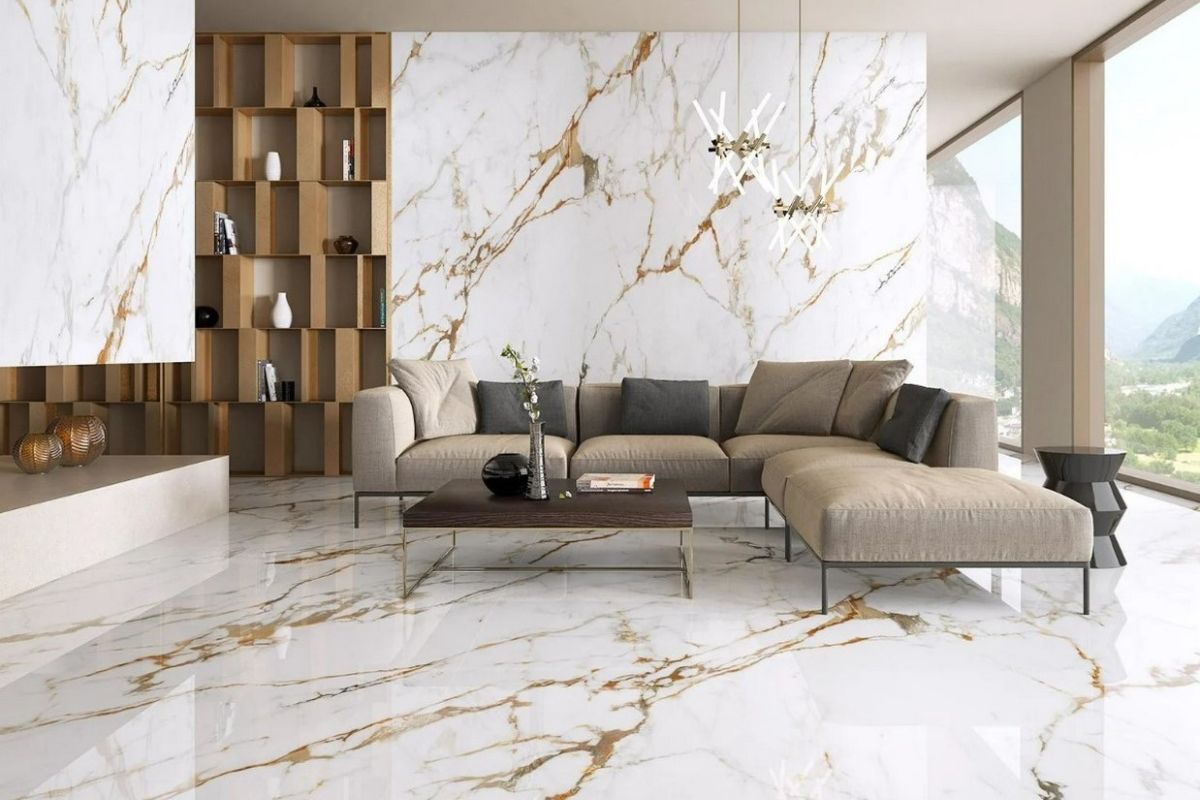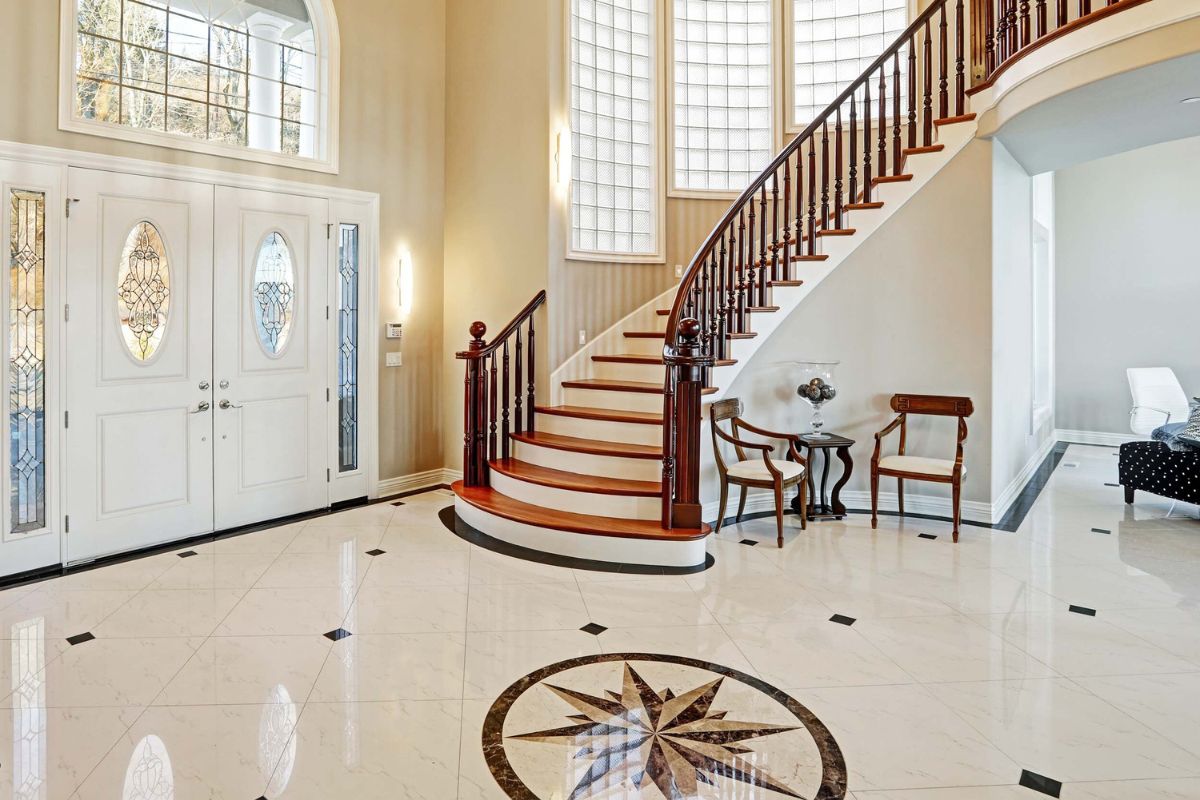
Marble flooring exudes luxury, sophistication, and timeless beauty, making it a coveted choice for homeowners looking to elevate their interior spaces. Renowned for its natural veining, unique patterns, and durability, marble flooring adds a touch of elegance to any room, whether it’s a grand entryway, a luxurious bathroom, or a stylish kitchen.
In this guide, we’ll delve into the world of marble flooring and explore inspiring design ideas to help you seamlessly integrate this exquisite material into your home decor. From classic marble tiles to contemporary marble slabs, we’ll showcase various styles, patterns, and applications that demonstrate the versatility and allure of marble flooring.
Whether you’re drawn to the understated elegance of Carrara marble or the bold veining of Calacatta marble, there’s a marble flooring option to suit every aesthetic preference and design vision. Join us as we embark on a journey of inspiration and discover how marble flooring can transform your home into a luxurious retreat that exudes timeless charm and sophistication.
Brief overview of marble flooring
Marble flooring is a luxurious and timeless choice for homeowners seeking to add elegance and sophistication to their interior spaces. Quarried from natural stone, marble is renowned for its exquisite veining patterns, rich colors, and lustrous finish, making it a highly sought-after material for flooring applications.
One of the key characteristics of marble flooring is its versatility, as it can complement a wide range of interior styles, from classic to contemporary. Whether used in a grand foyer, a stylish kitchen, or a luxurious bathroom, marble flooring instantly elevates the ambiance of any room, creating a sense of opulence and refinement.
In addition to its aesthetic appeal, marble flooring is prized for its durability and longevity. When properly maintained, marble can withstand heavy foot traffic and retain its beauty for decades, making it a worthwhile investment for homeowners.
While marble flooring is undeniably luxurious, it also requires careful consideration and maintenance. Its natural porosity makes it susceptible to staining and etching from spills and acidic substances, necessitating regular cleaning and sealing to preserve its pristine appearance.
Types of Marble Flooring
Marble Tile Flooring:
Classic and versatile option available in various sizes, shapes, and finishes.
Ideal for both traditional and modern interiors, including bathrooms, kitchens, and entryways.
Marble Slab Flooring:
- Large-format marble slabs create a seamless and luxurious look with minimal grout lines.
- Suitable for high-end residential and commercial spaces seeking a statement flooring option.
- Marble Mosaic Flooring:
- Intricately designed patterns created from smaller marble pieces, offering visual interest and texture.
- Perfect for adding a decorative element to floors in bathrooms, showers, and accent areas.
Honed Marble Flooring:
- Smooth, matte finish that enhances the natural beauty of marble while providing a slip-resistant surface.
- Popular choice for contemporary and minimalist interiors seeking a refined look.
- Polished Marble Flooring:
- High-gloss finish that highlights the veining and color variations of marble, creating a luxurious and glamorous aesthetic.
- Commonly used in formal living areas, lobbies, and commercial spaces desiring a sophisticated ambiance.
Tumbled Marble Flooring:
- Distressed and weathered appearance achieved through tumbling the marble tiles to soften edges and create a rustic look.
- Adds warmth and character to floors in rustic, Mediterranean, or farmhouse-style interiors.
Brushed Marble Flooring:
- Textured finish achieved by brushing the surface of the marble to expose its natural texture and imperfections.
- Offers a tactile and organic feel, making it suitable for casual and contemporary interiors.
- Polished Calacatta Marble Flooring:
- Exquisite white marble with bold and dramatic veining, prized for its luxurious appearance and rarity.
- Often used in high-end residential and commercial projects seeking a statement flooring material.
Advantages and Disadvantages of Marble Flooring
Advantages of Marble Flooring:
Timeless Elegance: Marble flooring exudes luxury and sophistication, adding timeless beauty to any space.
Variety of Options: Available in a wide range of colors, patterns, and finishes, allowing for customization to suit diverse design preferences.
Durability: When properly maintained, marble flooring is durable and long-lasting, capable of withstanding heavy foot traffic.
Cooling Properties: Marble flooring stays cool to the touch, making it ideal for warm climates and areas where temperature regulation is important.
Versatility: Suitable for various interior applications, including bathrooms, kitchens, living rooms, and entryways, enhancing the aesthetic appeal of any room.
Increased Property Value: Marble flooring adds value to a home and can attract potential buyers due to its luxurious appeal and durability.
Disadvantages of Marble Flooring:
Porosity: Marble is naturally porous and prone to staining, making it susceptible to damage from spills and acidic substances.
High Maintenance: Requires regular cleaning and sealing to prevent staining and etching, which can be time-consuming and costly.
Scratch and Etch Prone: Marble flooring can scratch easily, and acidic substances like citrus juices or vinegar can cause etching, detracting from its appearance.
Slippery Surface: Polished marble flooring can be slippery, posing a hazard, especially in areas prone to moisture like bathrooms and kitchens.
Cost: Marble flooring is relatively expensive compared to other flooring options, including installation costs, which may not fit everyone’s budget.
Limited Availability: Some types of marble are rare and expensive, making them less accessible and limiting design options for certain projects.
Marble Flooring Installation Guide
Marble flooring installation requires precision, skill, and attention to detail to ensure a beautiful and durable result. Follow these steps to achieve a successful marble flooring installation:
Preparation:
- Ensure the subfloor is clean, level, and free of any debris or imperfections.
- If necessary, install a moisture barrier to prevent moisture from seeping into the marble.
- Acclimate the marble tiles to the room’s temperature and humidity levels for at least 48 hours before installation.
Layout Planning:
- Plan the layout of the marble tiles, taking into account the room’s dimensions, doorways, and focal points.
- Dry-lay the tiles to visualize the pattern and make any necessary adjustments before proceeding with installation.
Setting Material Preparation:
- Choose a high-quality thin-set mortar or adhesive suitable for marble installation.
- Mix the mortar according to the manufacturer’s instructions, ensuring it has the correct consistency for proper adhesion.
Tile Installation:
- Begin in the center of the room and work outward, spreading mortar evenly with a notched trowel.
- Press each marble tile firmly into the mortar, using spacers to maintain consistent grout joints.
- Use a level to ensure the tiles are flat and even, adjusting as needed to prevent lippage.
- Continue laying tiles row by row, cutting tiles as necessary to fit around obstacles and edges.
Grouting:
- Once the mortar has cured (typically 24-48 hours), remove spacers and prepare grout according to the manufacturer’s instructions.
- Apply grout with a grout float, pressing it into the joints at a 45-degree angle.
- Remove excess grout with a damp sponge, rinsing frequently to prevent grout haze from forming on the marble surface.
- Allow grout to cure for the recommended time before sealing.
Sealing:
- Apply a penetrating sealer to the marble surface to protect it from stains and moisture.
- Follow the manufacturer’s instructions for application and drying times, applying multiple coats if necessary.
Finishing Touches:
- Clean the marble surface with a pH-neutral cleaner to remove any residue or haze left from grouting and sealing.
- Polish the marble to a high shine using a clean, soft cloth or buffing machine for a luxurious finish.
Maintenance:
- Regularly clean marble flooring with a mild detergent and water solution to remove dirt and debris.
- Avoid using abrasive cleaners or acidic substances that can damage the marble surface.
- Periodically reseal the marble to maintain its protective barrier and keep it looking its best.
Maintaining Marble Flooring: Tips and Best Practices
Marble flooring adds timeless elegance and sophistication to any space, but proper maintenance is essential to preserve its beauty and durability. Follow these tips and best practices to keep your marble floors looking pristine:
Regular Cleaning:
- Sweep or vacuum marble floors regularly to remove dirt, dust, and debris that can scratch the surface.
- Use a soft, damp mop or cloth to clean the floors with a pH-neutral cleaner specifically designed for marble.
- Avoid using abrasive cleaners or harsh chemicals, as they can damage the marble’s finish.
Immediate Spill Cleanup:
- Wipe up spills immediately to prevent staining and etching, especially from acidic substances like citrus juices, wine, and vinegar.
- Blot spills with a clean, absorbent cloth rather than rubbing, which can spread the spill and potentially damage the marble.
Sealing:
- Regularly check the sealant on your marble flooring and reapply as needed to maintain its protective barrier.
- Apply a high-quality penetrating sealer suitable for marble, following the manufacturer’s instructions for application and drying times.
Preventative Measures:
- Use mats or rugs in high-traffic areas and entryways to minimize wear and tear on the marble surface.
- Place coasters or felt pads under furniture legs to protect the marble from scratches and indentations.
- Avoid dragging heavy furniture or objects across the marble floor, as this can cause scratches and damage.
Avoid Abrasive Tools:
- Use gentle cleaning tools like soft-bristled brushes or microfiber cloths to avoid scratching the marble surface.
- Avoid using abrasive cleaning pads or brushes, as well as scrubbing too vigorously, which can dull or damage the marble’s finish.
Regular Maintenance:
- Periodically polish marble floors with a marble-specific polish to restore shine and luster.
- Schedule professional deep cleaning and maintenance as needed to address stubborn stains, etching, or dullness.
Protect Against Moisture:
- Use mats or rugs in bathrooms and kitchens to absorb moisture and prevent water damage to the marble flooring.
- Promptly dry any wet areas to prevent water from seeping into the marble and causing stains or discoloration.
Conclusion
In conclusion, marble flooring is a stunning addition to any home, providing timeless elegance and sophistication. With proper maintenance and care, marble floors can retain their beauty and durability for generations to come. By following the tips and best practices outlined in this guide, you can ensure that your marble flooring remains pristine and luxurious, enhancing the ambiance of your space and leaving a lasting impression on all who enter.




